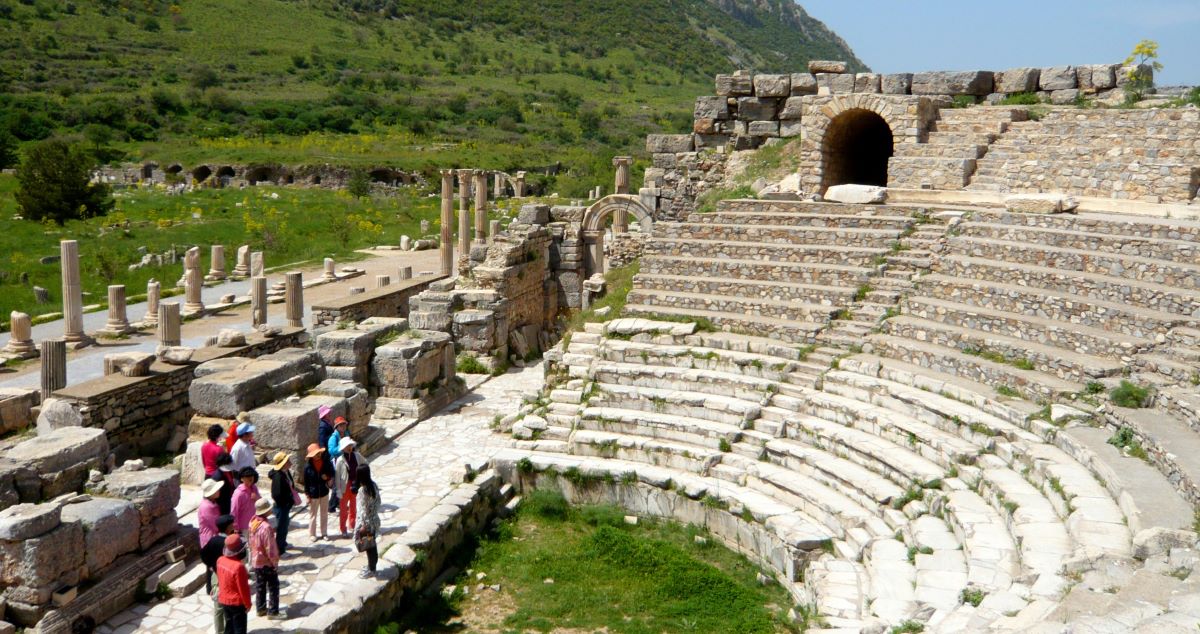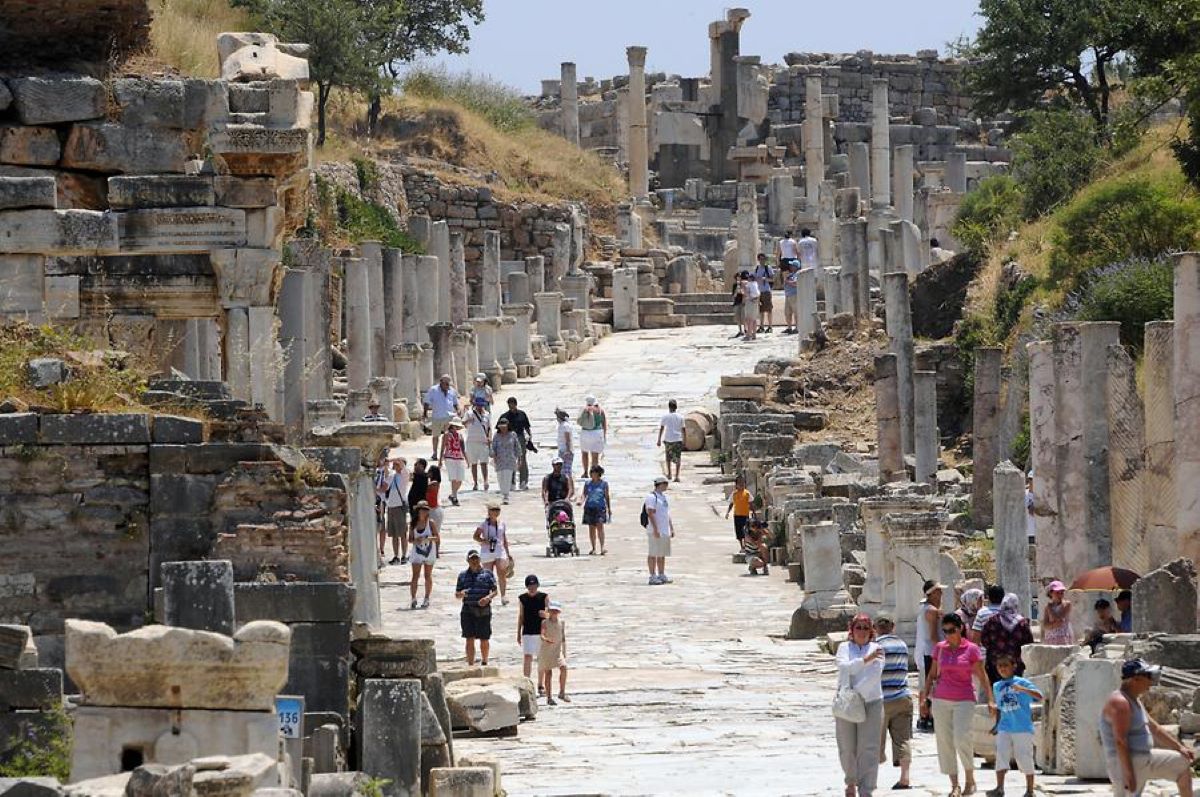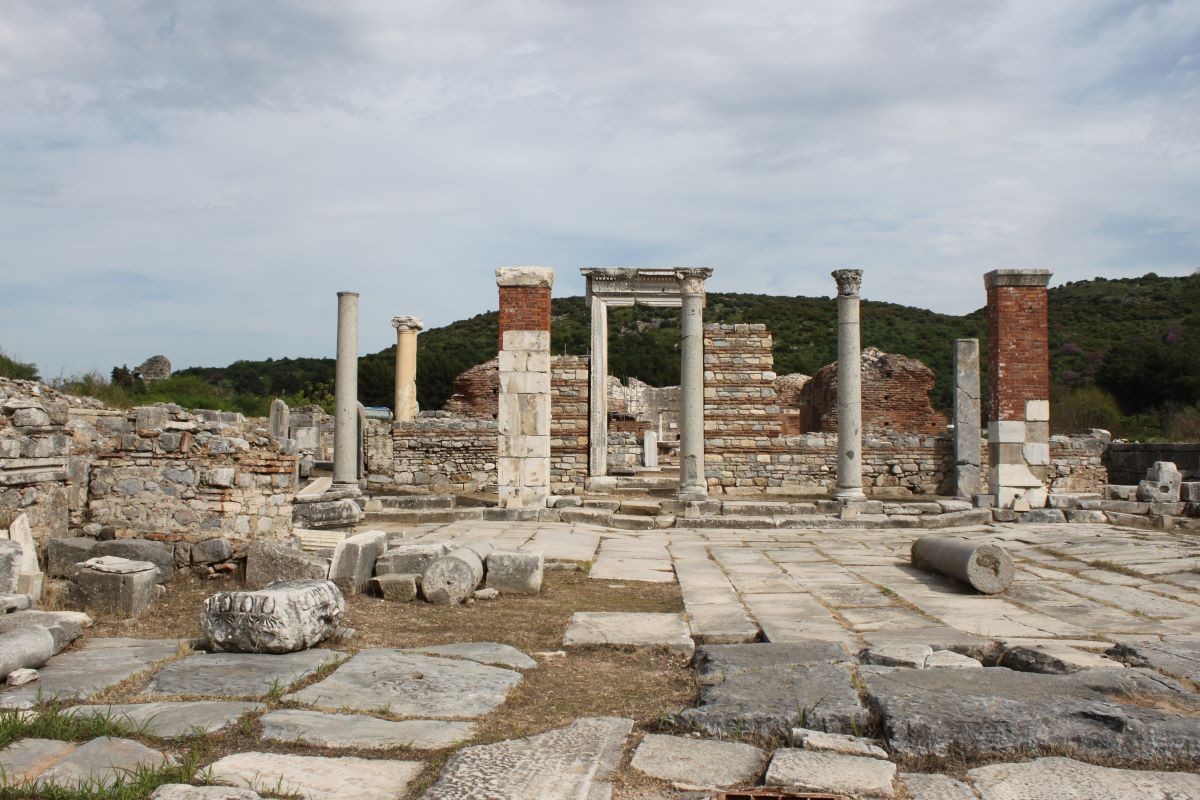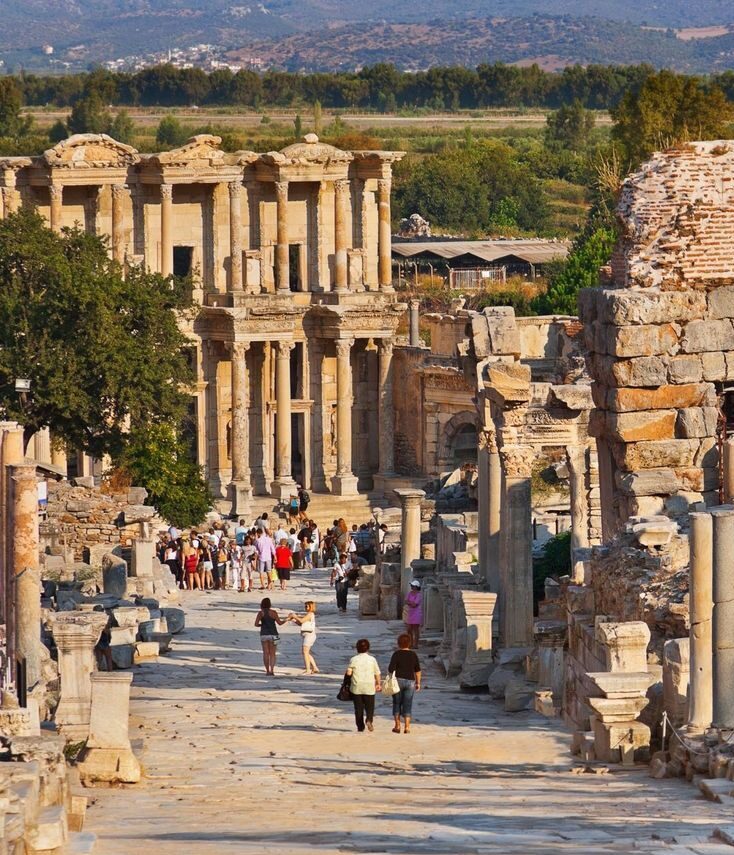The ancient city of Ephesus is a site of remarkable historical significance, with a…

The Odeon in Ephesus: An Ancient Theater of Music and Politics
Ephesus was once home to many impressive structures that were important for both practical and cultural purposes. One of the most notable of these is the Odeon, an ancient theater that was used for both music and politics.
The Odeon was built in the 2nd century AD during the Roman Imperial period, but it was not the first theater in Ephesus. The city had a long tradition of theater dating back to the Hellenistic period, and several theaters had been built and renovated before the Odeon. However, the Odeon was unique in its design and purpose.
The theater was a small, roofed structure that could accommodate up to 1,500 people. It was designed in a semi-circular shape that provided excellent acoustics for musical performances, and it was adorned with beautiful sculptures and reliefs. One of the most striking features of the Odeon was the statue of Athena that stood at the entrance. The statue was a reminder of the city’s ancient Greek heritage and its connection to the goddess of wisdom and war.
The Odeon was not only a place for entertainment, but also for politics. The city’s council, made up of wealthy citizens who had been elected to govern the city, would meet in the Odeon to discuss important issues and make decisions that affected the city’s residents. The council was responsible for maintaining law and order, ensuring the city’s prosperity, and managing its public works. The Odeon was an important symbol of the council’s power and influence in the city.
The Odeon was also a venue for important public speeches. The most famous of these was the speech delivered by the philosopher Heraclitus in the 5th century BC. Heraclitus was a native of Ephesus, and his speech was a critique of the city’s political system and the way it was being run. The speech was so influential that it led to significant political reforms in the city, and it is still remembered today as an important moment in the city’s history.
The design of the Odeon was influenced by the architecture of other theaters in the region, particularly the Theater of Dionysus in Athens. The Theater of Dionysus was the first theater to be built in Athens, and it became the prototype for all subsequent Greek theaters. Like the Odeon, the Theater of Dionysus was built into a natural hillside and had a semi-circular shape that provided excellent acoustics. The Odeon also borrowed design elements from the Theater of Pompey in Rome, which was the first permanent theater to be built in Rome and was one of the largest theaters in the ancient world.
The Odeon was not the only theater in Ephesus. The city had several other theaters, including the Great Theater, which was the largest theater in the city and could accommodate up to 25,000 people. The Great Theater was built in the Hellenistic period and was later renovated by the Romans. It was used for a variety of purposes, including dramatic performances, gladiatorial games, and public assemblies.
The Odeon, on the other hand, was a more intimate space that was used for smaller-scale performances and gatherings. It was often used for musical performances, particularly by local musicians who would showcase their talents in front of a smaller audience. The Odeon was also used for poetry readings and other cultural events.
Despite its smaller size, the Odeon was an important symbol of the city’s cultural and political identity. The theater’s roofed design allowed for performances to take place year-round, regardless of the weather, making it an important cultural hub in the city. The Odeon was also an important symbol of the city’s connection to ancient Greece and Rome, and a testament to the city’s role in the wider Mediterranean world.
Over time, the Odeon fell into disuse and was abandoned. Its roof collapsed, and the building was buried under layers of soil and debris. It was not until the 20th century that the Odeon was rediscovered and excavated by archaeologists. Today, visitors can explore the theater and marvel at its unique design and historical significance.
The Odeon in Ephesus is a testament to the cultural and political importance of theater and music in ancient Greece and Rome. The theater’s semi-circular design and roofed structure provided excellent acoustics for musical performances, while its importance as a venue for public speeches and council meetings underscored the theater’s role in the city’s political life. Today, the Odeon stands as a testament to the rich history of Ephesus and the wider Mediterranean world, and a reminder of the enduring importance of culture and politics in shaping our world.




This Post Has 0 Comments